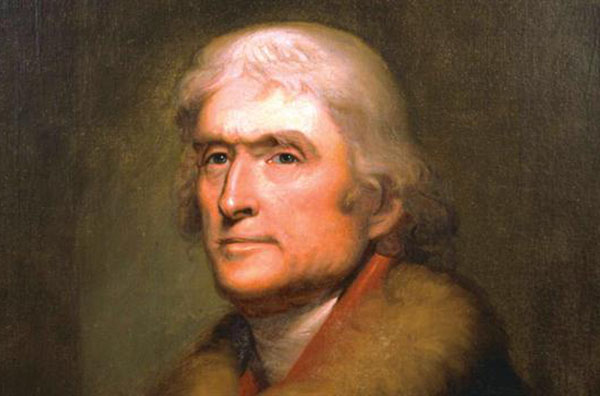Some of our greatest Presidents did not succeed on their first try at national office. Many Presidents were once defeated candidates for the presidency or vice presidency before winning presidential election. Rarely does a defeated candidate get another chance at the top spot, much less winning it.
The first previously defeated candidate to win the White House was Thomas Jefferson. In the election of 1792, Jefferson received 4 electoral votes, losing the Vice Presidency to John Adams, who was re-elected Vice President.
In 1796, Jefferson again lost to Adams, this time for the Presidency. Adams received 71 electoral votes to Jefferson’s 68. In the system of election before the 12th Amendment to the Constitution, the runner-up for President became Vice President. This resulted in Jefferson serving as Adams’ Vice President, even though the two had been bitter opponents in the election.
In 1804, the 12th Amendment was added to the Constitution. This amendment created separate races for President and Vice President, with the runner-up getting no office. In the next election in 1808, things were a little confused, and a number of people received electoral votes for Vice President. James Madison was elected President, and George Clinton (no relation to Bill) was elected Vice President with 113 electoral votes. Other future Presidents who received electoral votes for Vice President in this election were James Monroe and James Madison (even though he was elected President in the same election), both of who received 3 electoral votes each.
In 1820, James Monroe carried every state. But one elector who was pledged to Monroe voted for Monroe’s Secretary of State, John Quincy Adams. Four years later, John Quincy Adams ran for President, and was chosen by the House of Representatives after a four-way race in which no candidate received a majority of votes in the Electoral College.
In the tumultuous election of 1824, John Quincy Adams won the White House, but two future Presidents also received electoral votes. Andrew Jackson actually received more electoral votes (and popular votes) than John Quincy Adams, but lost in the House of Representatives, as mentioned above. Jackson also received 13 electoral votes for Vice President. Future Vice President and President Martin Van Buren received 9 electoral votes for Vice President, losing to John Calhoun who became John Quincy Adams’ Vice President, and later Jackson’s Vice President as well.
In 1836, Martin Van Buren was elected President, defeating William Henry Harrison, with 170 electoral votes to Harrison’s 73. Future President John Tyler with 47 electoral votes was defeated for Vice President by Richard M. Johnson.
In 1840, William Henry Harrison won a re-match with Martin Van Buren. Harrison won 234 electoral votes. One electoral vote was cast for James Knox Polk, former Speaker of the House of Representatives and Governor of Tennessee. After this election, electors acted with less individual independence, and began “rubber stamping” their states’ popular vote. As a result, you had fewer scattered votes, as in many of the situations described above, where a person not actually campaigning for the office received electoral votes.
The next election in which a future President was defeated was in 1888. President Grover Cleveland was defeated for re-election by Benjamin Harrison in the Electoral College, even though Cleveland won the popular vote. In the election of 1892, however, Cleveland managed to defeat Harrison in a re-match. Cleveland is the only President who, after being defeated for re-election, was re-nominated four years later. He is also the only President to have served non-consecutive terms.
In the election of 1920, Warren Harding was elected President, and Calvin Coolidge was elected Vice President. Coolidge defeated a former Assistant Secretary of State named Franklin Delano Roosevelt, who received only 127 electoral votes for Vice President. Franklin Roosevelt went on to win no less than four Presidential elections, all by huge majorities, in 1932, 1936, 1940, and 1944.
In 1960, Vice President Richard Nixon lost an extremely close election to John F. Kennedy. Nixon, in his role as President of the Senate, was the official who had to count the electoral votes and declare himself the loser in the election. In 1968, Nixon won a very close race for President, and was re-elected in 1972, carrying 49 states. After this record landslide victory, Nixon was forced to resign in 1974 as a result of the Watergate scandals.
Usually, a national defeat results in the end of any chances of national office. Rarely is a defeated candidate re-nominated, with a few notable exceptions such as Henry Clay (1824, 1832 and 1844), William Jennings Bryan (1896, 1900, and 1908), Thomas Dewey (1944, 1948) and Richard Nixon (1960, 1968). But the men described here managed to overcome their defeats and, indeed, some of them were among our greatest Presidents.



